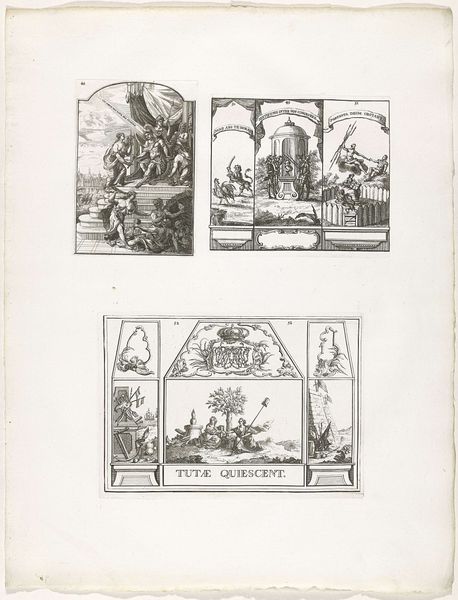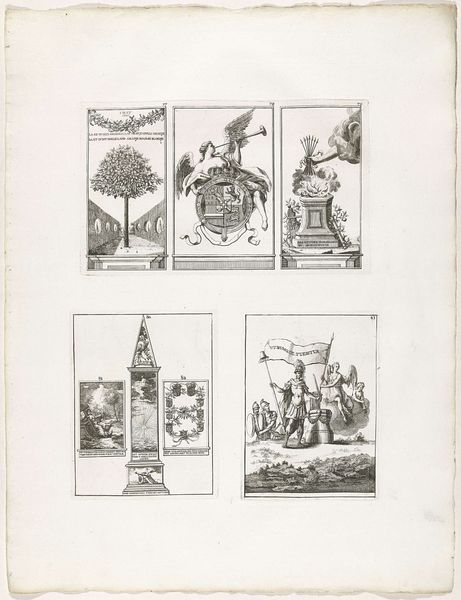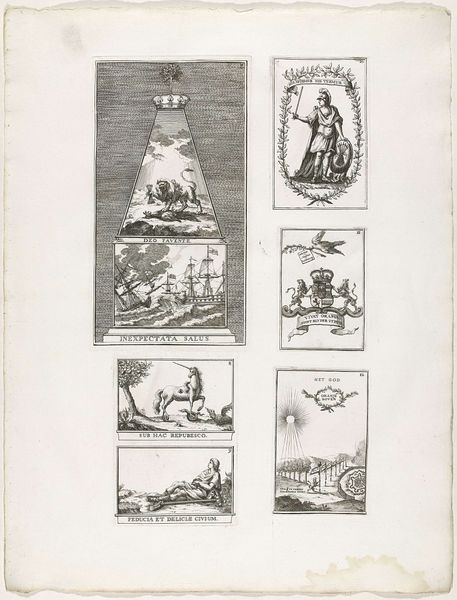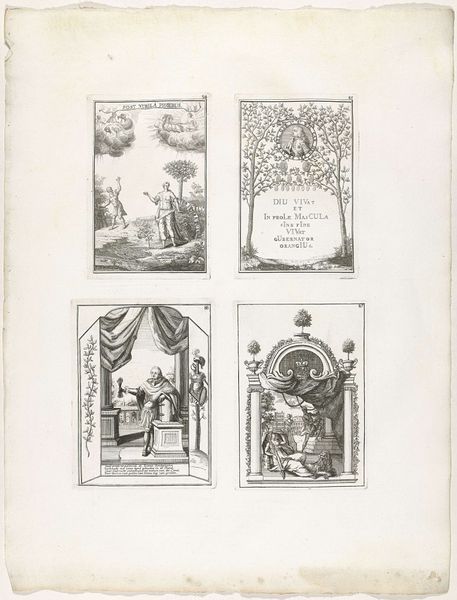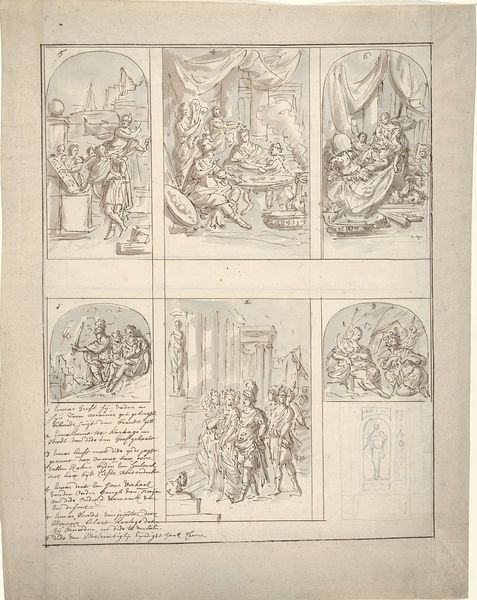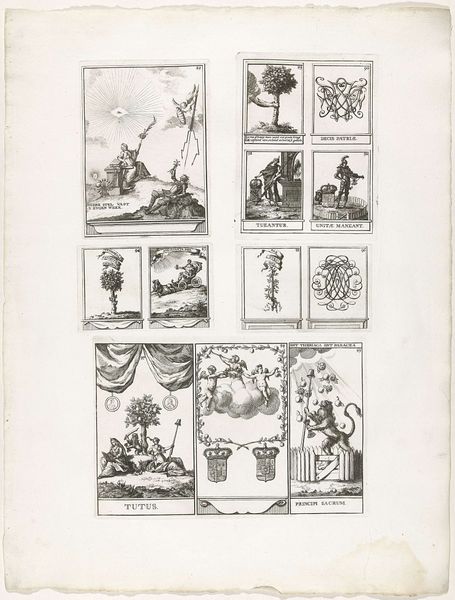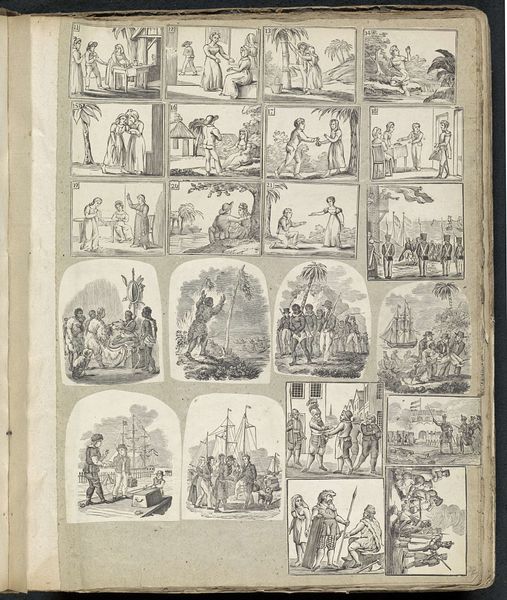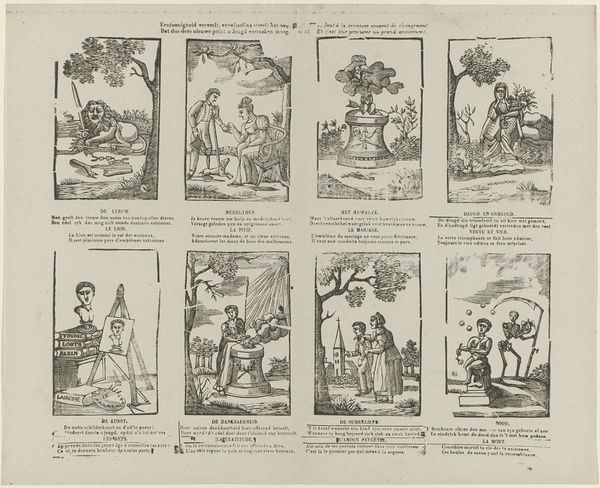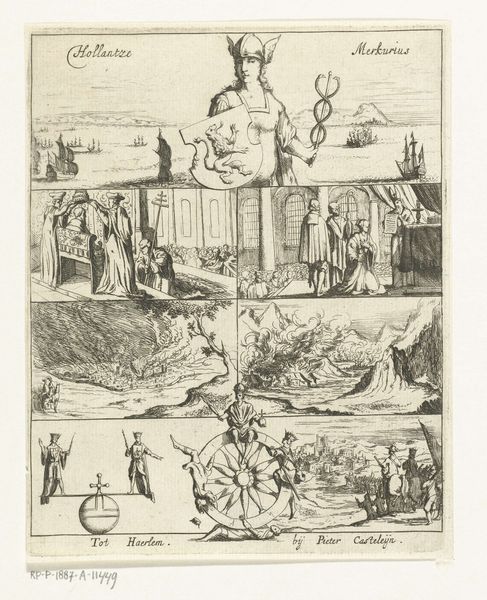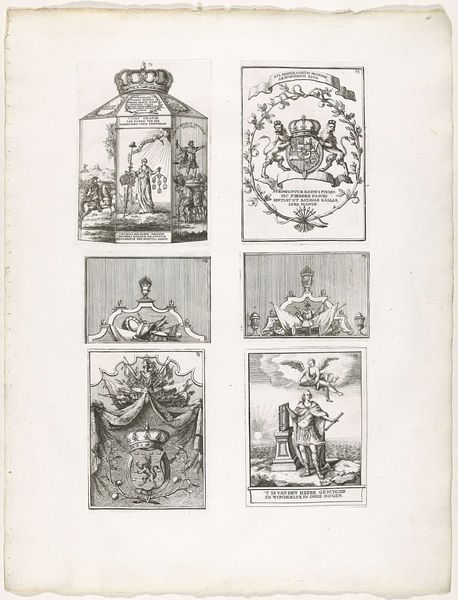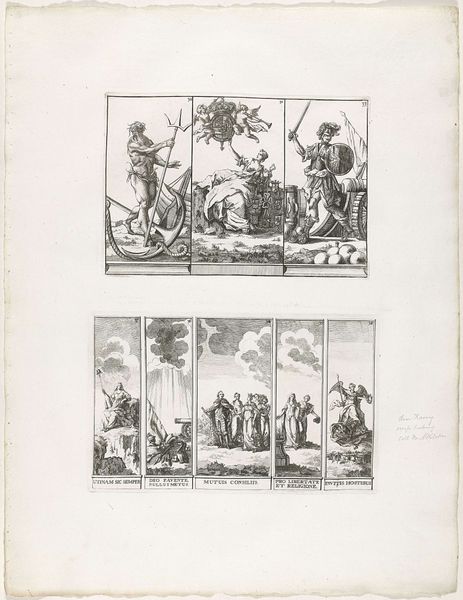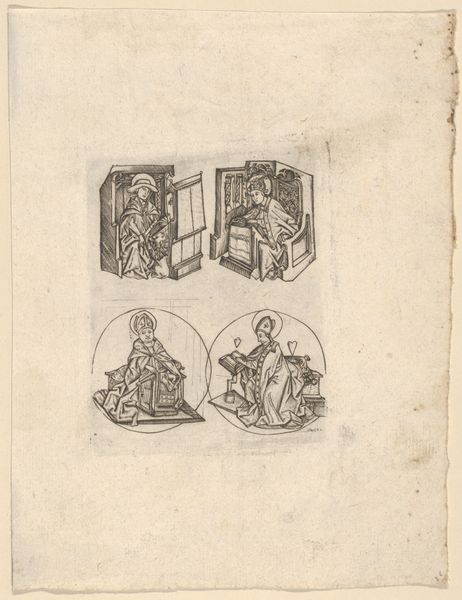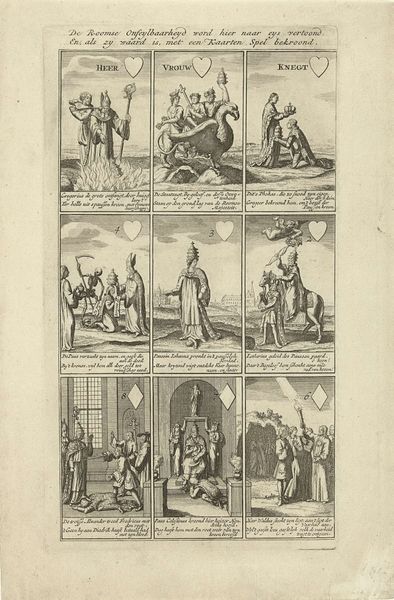
Dimensions: height 545 mm, width 420 mm
Copyright: Rijks Museum: Open Domain
Curator: Let's delve into this 1751 print titled "Decoraties A-E te Den Haag, 1747," housed here at the Rijksmuseum. The piece, crafted with ink and engraving on paper, features a series of allegorical decorations. Editor: My first impression is how intricately crafted these designs are; they're dense with detail, despite being relatively small in scale. The artist clearly had remarkable skill with the burin to produce these tiny emblems. Curator: Indeed. Considering the social context, these decorations likely served a political purpose, perhaps celebrating or legitimizing the House of Orange's rule in the Dutch Republic. The text inscriptions and the symbolic figures point towards such an interpretation. The references to ‘vox populi vox dei,’ and triumph clearly reinforce the existing regime through divinely ordained power. Editor: I agree that the intent feels heavily politicized. And looking closely, one panel features two lions supporting a heraldic shield beneath what seems to be a theatrical drape, giving me this interesting sense of staged power or authority and also perhaps about the theater and drama surrounding authority. How do these various symbols come together for you? Curator: Well, the piece that depicts an ‘all seeing eye’ inside of a triangular prism evokes the Enlightenment ideals, which is intriguing. The image overall gives us insights into the popular consciousness and desires during a tumultuous political era. The engravings provide a snapshot of intersectional power at play and a sense of a society trying to consolidate power. Editor: The meticulous production would have been time-consuming and skillful. The social status and specialized knowledge the artist brings to bear feels worth mentioning; it brings to mind that we can ask of objects ‘who touched it and how.’ In its material creation, what meanings were embedded into these public symbols. Curator: That’s a valid question for analyzing power structures and revealing cultural meanings inherent in these designs. Considering how social movements engage symbols, from the Black Panthers to Queer Nation, can reveal much more than is immediately clear about symbols, art, and public imagination. Editor: So, what's our key takeaway here, seeing as how it all circles back to consumption in this time period? Curator: I think it reveals how the power of symbols and artwork were entangled, then and now, within political and societal frameworks shaping identities and justifying power structures, and their continued circulation and consumption tells us much about a population at that time. Editor: Absolutely, and thinking about the material processes brings the act of celebrating or debating societal change into greater resolution and reminds us of the physical realities embedded within symbolism.
Comments
No comments
Be the first to comment and join the conversation on the ultimate creative platform.
